Description
The 48-star ensign of BB-62, “The Big J”, (Also known as “The Black Dragon” in WWII
due to being painted a dark blue, which made it very difficult to see in the dark.) is a
Defiance brand wool flag with sewn stars & stripes and is finished with a roped canvas
header and two rope loops. The flag has a sewn maker’s mark on the upper obverse hoist
and is ink stamped “10 x 15 FT” and marked by hand “BB62″ twice and “NEW JERSEY” in
faded black marker. Actual finished size is 105″ by 167″. This size flag would have been
the main national flag flown from the mast of the New Jersey. As fewer WWII veterans
survive and interest in the war’s history increases, the value of this historic flag will only
increase. WWII flags we sold 20 years ago for a few $hundred are now bringing many
times that price at auction.
The New Jersey, the second of four Iowa Class battleships built during the war, was
launched on the one-year anniversary of the attack on Pearl Harbor and commissioned in
May of 1943. After a training and shakedown cruise, she reported for duty in the Pacific in
January of 1944. She began her career as the flagship of the 5th fleet under Admiral
Spruance, operating against Japanese positions in the Marshall Islands by screening
aircraft carriers and bombarding Eniwetok. Her next major campaign was against New
Guinea, the Marianas Islands, and the Battle of the Philippine Sea. New Jersey was made
flagship of Admiral’s Halsey’s Third Fleet and cruised the waters off the Philippines,
Okinawa, and Formosa in preparation for the liberation of the Philippines. After the
landings at Leyte she made her last cruise as Admiral Halsey’s flagship guarding carriers
in attacks on Formosa, Okinawa, Luzon, Indo-China, Hong Kong, Swatow, Amoy, and
Okinawa. She screened the attacks on Iwo Jima, Okinawa and the Japanese home
islands until she sailed for the states for a refit, rejoining the fleet just before the Japanese
surrender. The New Jersey then served as the flagship for the US Navy in Japanese
waters until relieved, when she became a part of Operation Magic Carpet and returned
over 1,000 servicemen to the U.S. After WWII, she served in Korea and Vietnam and is
currently a museum ship.
WWII Awards of the USS New Jersey (BB-62) include China Service Medal, American
Campaign Medal, Asiatic-Pacific Campaign Medal with nine campaign stars, World War II
Victory Medal, Navy Occupation Service Medal, Philippine Presidential Unit Citation, and
Philippine Liberation Medal with two campaign stars. When combined with her post-war
awards the New Jersey holds the distinction of being the most decorated battleship in US
history.
This flag was formerly in the collection of Dr. Clarence Rungee, and is accompanied by
his original museum inventory sheet with identifying information.
Observations on the WWII Flags of the Rungee Flag Collection
By Jim Ferrigan
Dr. Clarence Rungee, of New Haven, Connecticut, began collecting flags during WWII and continued until his death in 1971. Although his collection of over 600 flags was not limited to military and naval flags, they are perhaps the most interesting in the collection because they are silent witnesses to the greatest event in world history, World War II.
Rungee, himself a veteran and active in Veteran’s affairs, served as the Surgeon General of the Veterans of Foreign Wars. He used his many connections to correspond with military and naval officers asking for significant flags associated with events, vessels, or individuals. For Rungee however, it could not be just, “Any old flag… It has to be a flag with some historical importance attached to it.”
The results….. well over 100 used flags from units and vessels that were participants in WWII. These are not ceremonial or commemorative flags, but rather flags that were used on the vessels or carried by these units. In every case their condition betrays their use. In some cases, the flags were actually spared from destruction by Rungee’s request.
This begs the question, “How do we know these are real?” The answer is threefold:
-
The flags themselves are all from the 1941-1945 era, military, naval, or civilian- all flags are from the period.
-
Dr. Rungee and his collection are documented in numerous contemporary newspaper interviews and articles.
-
After his death his collection was acquired by America’s premier vexillologist, Dr. Whitney Smith, founder of The Flag Research Center, who accessed the Rungee Collection into his Flag Heritage Foundation in 1976, and whose original intake documents accompany most flags.
An example of just how well-placed Dr. Rungee was to ask for and acquire these flags is no less than Fleet Admiral Chester Nimitz, who hosted Dr. Rungee at the 1946 observation of the signing of the instrument of the Japanese surrender aboard the USS Missouri.
Dr. Rungee acquired flags from ships and units associated with some of the most momentous events of WWII. It cannot be said with any certainty that any specific flag was at any event, only that it came from a ship or unit that was. Whether ragged or resplendent, the Rungee flags represent the largest collection of vexillological material culture for WWII still in private hands.
James Ferrigan is one of the country’s leading vexillogical historians. Since 1984 he has published numerous articles in scholarly journals and made presentations to a wide range of conferences and symposiums on the subject. He has served as vice president of the American Vexillogical Association, and since 1997 has been the Protocol Officer for that organization. James Ferrigan consults actively for institutional collections and prominent private collectors, and advised the Smithsonian Institution on conservation of the Star Spangled Banner. He is widely regarded as the foremost expert on the use and history of flags during World War II.
Annotated history of Rungee and his museum
Dr. Clarence R. Rungee (pronounced Rungy, with a hard g) was born in New Haven, Connecticut, in 1888. He attended Temple University in Philadelphia and received an M.D. degree there, later working as a pharmacist and hospital director. He was active in Republican politics in New Haven for many years, and served on the city’s Board of Aldermen. As a veteran of World War I, Dr. Rungee acted as National Surgeon General of the Veterans of Foreign Wars and was National Historian of the Veterans of World War I.
When he died in 1971, Dr. Rungee had one of the most extensive and unusual private collections of flags anywhere. He had obtained more than 600 flags from all parts of the world and from such famous people as General Dwight Eisenhower, Emperor Haile Selassie I of Ethiopia, President Syngman Rhee of South Korea, and President Chaim Weizmann of Israel. In addition to the flags, Dr. Rungee’s private museum included hundreds of autographed photographs of distinguished people. He displayed his flags in many lectures he delivered during the years 1947-1971. After Dr. Rungee’s death his widow, Antoinette Rungee, donated his flags (and copies of many of the autographs) to the Flag Heritage Foundation as the Dr. Clarence R. Rungee Memorial Collection
Iowa Class Battleship Specifications, as Originally Built:
Displacement: 48,110 BRT
Length: 887 feet
Crew: 1911 men
Armament: 9 – 16″/50 guns (3×3),
20 – 5″/38 DP guns (10×2),
76 – 40 mm AA (19×4),
52 – 20 mm AA (52×1),
3 aircraft, 2 catapults.
Max speed: 33 knots
Engines: Geared turbines, 4 shafts
Power: 212,000
Though smaller than the Japanese Yamato-class battleships, the Iowa-class was much
better equipped in many ways and were perhaps the most powerful battleships ever built.

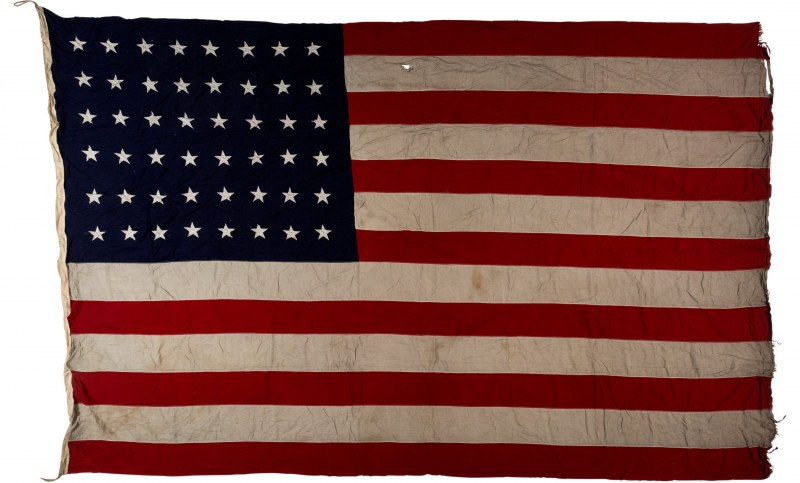
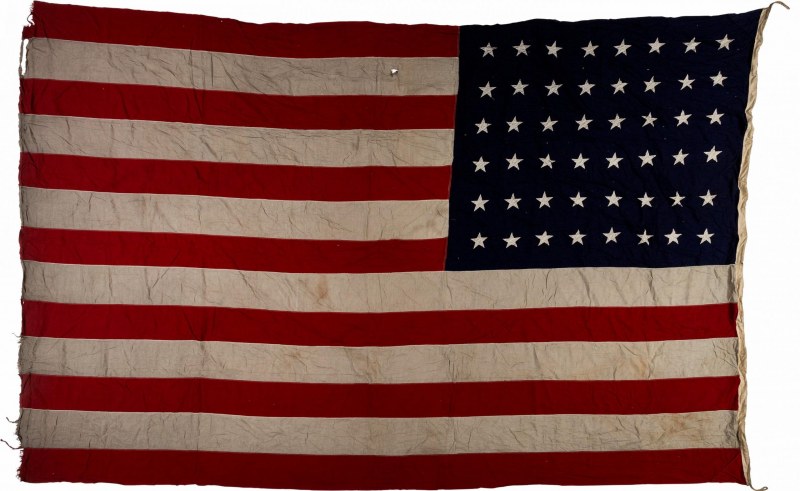

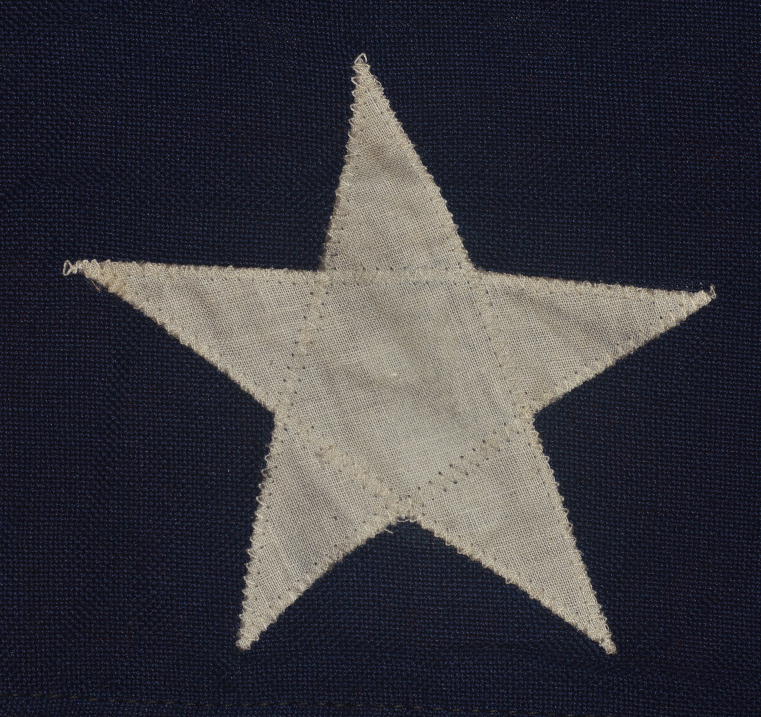
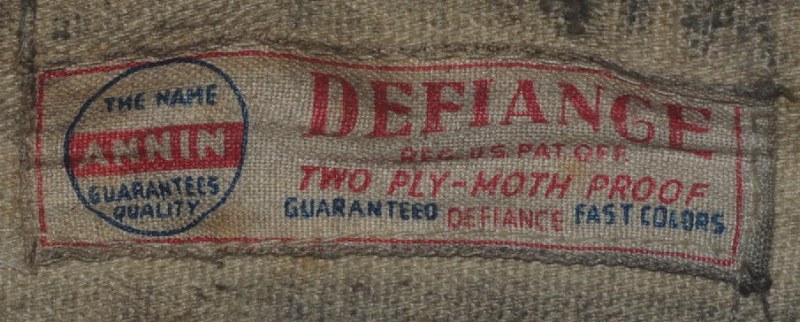
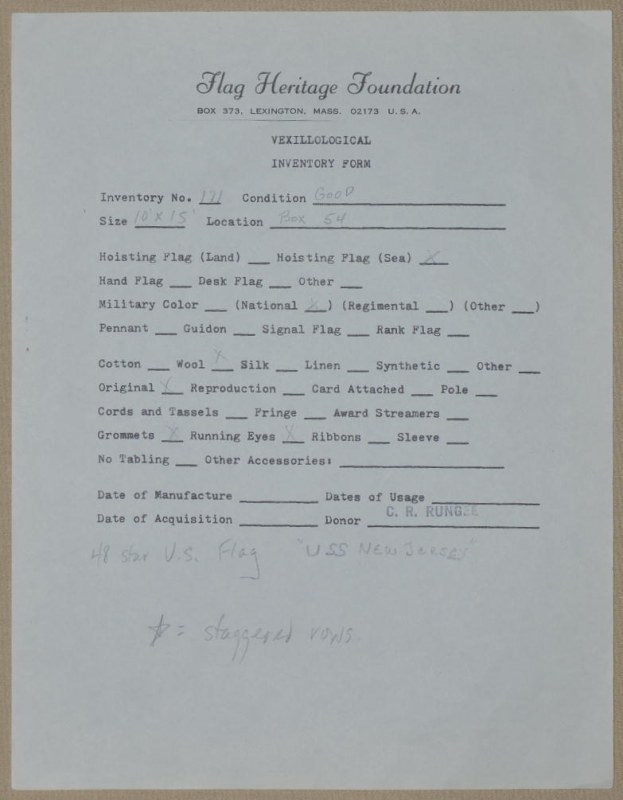
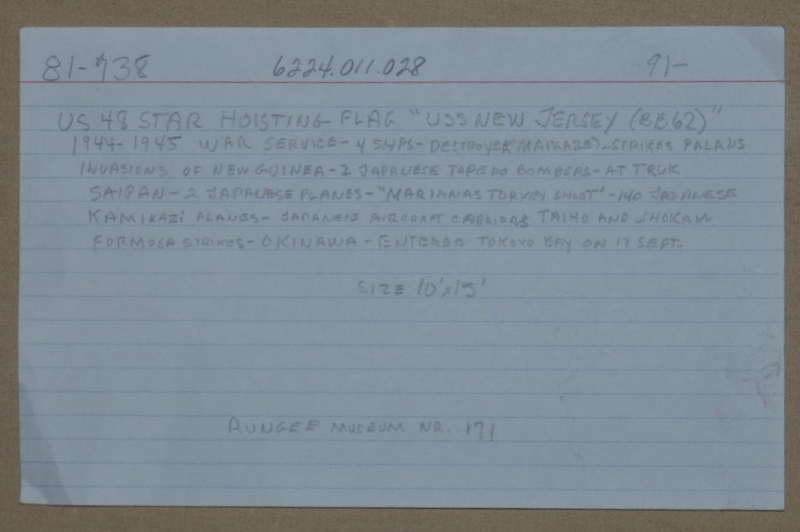
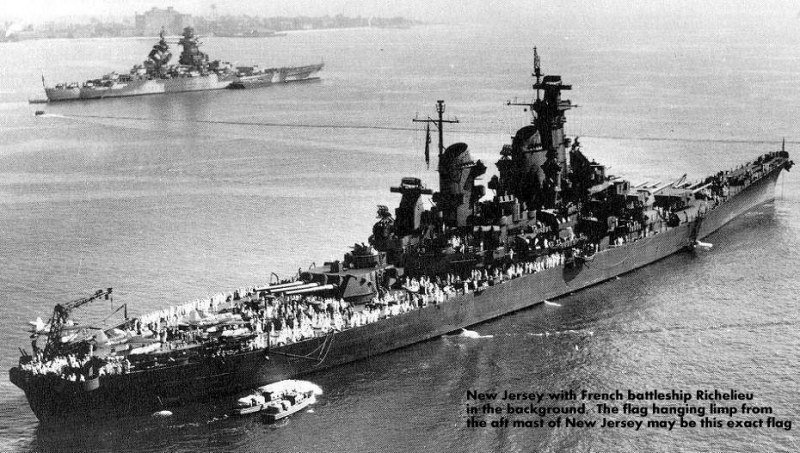
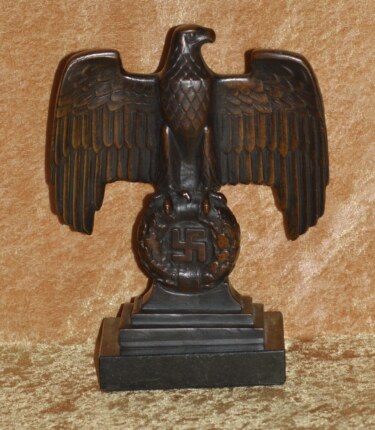 Scarce NAZI German Desk Ornament/Statue
Scarce NAZI German Desk Ornament/Statue 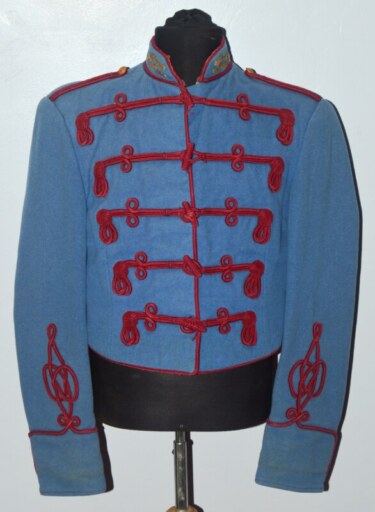 Austro-Hungarian Hussar Tunic, probably WWI era
Austro-Hungarian Hussar Tunic, probably WWI era 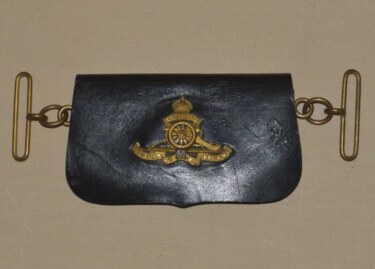 British Victorian Royal Artillery Officer’s Undress Pouch
British Victorian Royal Artillery Officer’s Undress Pouch 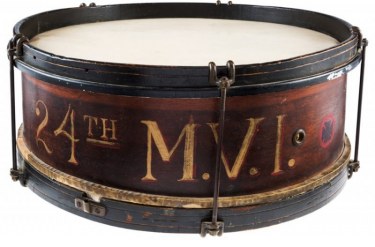 24th Michigan “Iron Brigade” Painted Snare Drum.
24th Michigan “Iron Brigade” Painted Snare Drum.